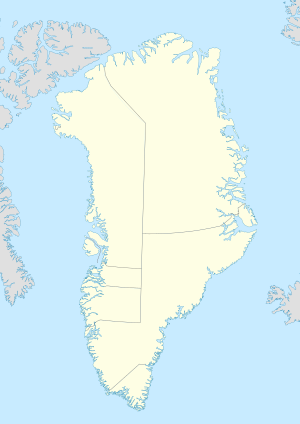Etah, Greenland
| Etah | |
|---|---|

Brother John's Glacier as seen from Foulke Fjord near Etah in Spring, 1938
|
|
| Location within Greenland | |
| Coordinates: 78°18′50″N 72°36′35″W / 78.31389°N 72.60972°WCoordinates: 78°18′50″N 72°36′35″W / 78.31389°N 72.60972°W | |
| State |
|
| Constituent country |
|
| Municipality |
|
| Time zone | UTC-04 |
Etah is an abandoned settlement in the Qaasuitsup municipality in northern Greenland. It was a starting point of discovery expeditions to the North Pole and the landing site of the last migration of the Inuit from the Canadian Arctic.
The village was located on the shores of Foulk Fjord near Reindeer Point. The fjord is about 1.5 miles (2.4 km) wide and several miles long with 2,000 ft (610 m) cliffs on each side. Brother John's Glacier terminates at the eastern end of the fjord. At the foot of the glacier is Lake Alida, a small body of frozen fresh water. The northern end of Baffin Bay west of the former village, narrowing into Nares Strait between Greenland and Ellesmere Island, is usually frozen from October to July.
Etah lies on the ancient migration route from the north of the Canadian Arctic with several waves of ancient migrants passing through the area from the northbound Independence I and Independence II cultures 4,400 and 2,700 years ago, respectively, to the southbound Thule culture migrants less than a thousand years ago.
It is also the point where the last migration of the Inuit from Baffin Island reached the coast of Greenland in 1865. An Inuit shaman (Greenlandic: angakok) named Qidlaq led the migrants from Baffin Island alongside the coast of Ellesmere Island for seven years, crossing the strait to Etah. The group split there, with some returning to Pond Inlet in Canada at a cost of many lives. Inhabitants of Pituffik, later relocated to Qaanaaq, are partially descended from this last group of Arctic migrants to Greenland.
...
Wikipedia

